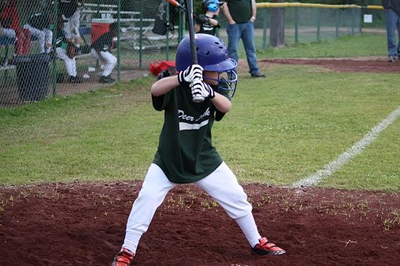One of the best moments of being a parent is watching our little ones play in youth sports.
 In fact, there’s only a handful of things more enjoyable than watching our kids score a goal, get a base hit, shoot a three-pointer or run for a touchdown. However, even when our children participate in the most organized of sports programs, they still endure injuries. As parents, we feel their pain, and want nothing more to see them back on the playfield, having fun.
In fact, there’s only a handful of things more enjoyable than watching our kids score a goal, get a base hit, shoot a three-pointer or run for a touchdown. However, even when our children participate in the most organized of sports programs, they still endure injuries. As parents, we feel their pain, and want nothing more to see them back on the playfield, having fun.
Depending on the injury, treatments can drastically vary; but there are many things we can do as parents to prevent, treat and promote faster recoveries. Many times, spotting an injury isn’t as simple as it would seem. Not all children are able to properly identify if or when an injury has occurred, which can make diagnoses ever the more complicated.
From Peewee football and low-impact karate lessons to ballet lessons and Little League softball, injuries can occur anywhere, anytime. Fortunately, most youth sports injuries are easy to spot and simple to treat; however, back and knee issues in children and adolescents can linger, which may require additional treatments options such as acupuncture, physical therapy, or even an adjustable bed to thoroughly improve any persistent issues.
Preventing Sports Injuries
- Enroll in Organized Program – If you haven’t already, enrolling your child into a monitored, organized sports program is the most important part of preventing an injury. Having coaches, teachers, parents and other supervisors present during physical activity provides you with the peace of mind knowing that if your child does endure an injury, he or she is taken care of accordingly.
- Proper Warm-up – If you thought warm ups weren’t meant for children in their developing years, think again; introducing a proper warm-up into your child’s routine is absolutely fundamental to he or she’s chance of preventing an injury. Additionally, learning constructive warm-ups at an early age teaches them more about their bodies, and promotes healthy habits for future years.
Depending on your schedule, it may be of high-value to introduce yoga and stretching exercises into your child’s life. This can lead to less vulnerability to suffering injury due to higher flexibility and muscle-coordination. Make sure to act as a yoga-mentor or guide to encourage proper training and lower risk of injury.
- Overuse Injuries – Many parents assume our children have endless energy and can endlessly run 24 hours out of the day. However, this is very much an incorrect stigma, which leads to serious injury and can further affect bone development. Make sure you’re paying attention to the amount of time/hours/days your child is participating in play. Limit he or she to only four days out of the week for proper rest if your child is consistently participating in a sport.
Most common ‘overuse injuries’ include:
- Anterior knee pain – Pain in front of the kneecap; swollen knee and can feel tender due to cartilage inflammation.
- ‘Little League’ Elbow – Tenderness in arm; occurs when child is repetitively throwing and/or pitching; pain usually occurs during follow-through of throw.
- Swimmer’s Shoulder – Inflammation in the shoulder due to inflammation of repetitive motion (similar to ‘Little League’ Elbow); pains usually occurs in back of shoulder joint.
- Shin splints – Shin splints can be extremely frustrating, can linger for days/weeks and are painful; caused by repeated running; pain usually occurs lower-front of leg (shin bone area).
- Access to Water – It may sound obvious, and it is, but it has become disturbingly all too common for children to endure heat-related illness and dehydration due to lack of water. Many times he or she may be unfamiliar with the importance of proper hydration, so make sure to teach your kids how and when to stop playing and drink. Additionally, “chugging” water during high-stress activity can result in upset stomach and even vomiting, so it’s also important to explain how to properly drink (e.g., sipping water) during exercise.
- Usage of Proper Equipment – It’s imperative for kids to not only wear the appropriate gear associated with the sport, but also that it properly fits and functions correctly; this includes, but is not limited to:
- Helmets
- Mouth guards
- Shin guards
- Athletic cups
- Bicycle (height)
- Baseball gloves
- Ball size
- Shoes
- Goggles
- Padding
- Etc.
Image: https://pixabay.com/en/baseball-little-league-children-92382/
